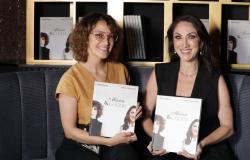On October 26, 1924, ‘El Pueblo Vasco’ reported on its cover of the inauguration of the Museum of Modern Art of Bilbao in a building owned by the Provincial Council on Epalza Street. «It consists of four well-equipped rooms decorated with the … good taste peculiar to its director, Mr. (Aurelio) Arteta,” wrote the journalist, who lamented the narrowness of an exhibition space that was too small with 40 paintings and 3 sculptures. “We will have to think about its expansion,” he said.
Ten years earlier, in 1914, the Museum of Fine Arts had started in the old Civil Hospital of Atxuri, where the School of Arts and Crafts was also housed. The Civil War suspended the activity of both centers and forced the bulk of the collections to be stored or expatriated to France by sea. After the end of the war and the return of the works, it was necessary to build a headquarters to house them. In 1945, the park’s current art gallery was inaugurated, the work of architects Fernando Urrutia and Gonzalo Cárdenas, which brought together the funds of the Museum of Modern Art (which maintained its administrative independence until 1969) and the Fine Arts.
‘Entreacto’ is the title of the exhibition that until January 7 commemorates a century since the birth in Bilbao of a museum dedicated to modern art, something that only Barcelona and Madrid, which had created them, could boast of at that time in Spain. in 1891 and 1894 respectively. The exhibition traces the history of a center in full transformation these days and claims some of the most memorable pieces from the permanent collection.
The ‘Goyas de Zubieta’, who left Euskadi in 1936 and did not return until 2019.
Ignacio Perez
“The expansion of Norman Foster, one of the most exciting projects in the city, is beginning to be tangible, you can touch it with your fingers,” observed Mayor Juan Mari Aburto at the presentation, while director Miguel Zugaza was pleased to celebrate ” “historical continuity” of the center. A book published by the museum and the BBK Foundation, ‘The origins of a collection’, an update of Mikel Onandia’s doctoral thesis, complements an exhibition that combines canvases and sculptures with abundant historical documentation: plans, press of the time, brochures and administrative documents found in the archives of the museum, the Town Hall and the Provincial Archive.
‘Entreacto’ occupies twelve rooms on the upper floor of the building under the cranes, the same space that was dedicated to modern art in 1945. Antonio de Guezala’s masterpiece, ‘The Revolving Door’ or ‘Portrait of Begoña de la Sota ‘, he welcomes on the landing. It is the door of the Carlton Hotel during the celebration of a party in 1927 to commemorate the figure of the painter Adolfo Guiard, present in the exhibition with another masterpiece: ‘The Little Village of the Red Carnation’.
The park’s Museum of Fine Arts was the first building built in Bilbao specifically as a museum in 1945.
Guezala condenses on the canvas countless references from the avant-garde, including Murnau’s cinema, who began ‘The Last One’ (1924) with the shot of the revolving door of a hotel. ‘Entreacto’ takes its title from another film by René Clair from that same year with a clear Dadaist and surrealist vocation. A projector spits out its images, which Buñuel and Dalí would enjoy: a funeral procession accelerates its pace until, suddenly, a coffin falls to the ground. The supposed dead man emerges dressed as a conjurer and breaks the sign that announces the end of the film.
The contents of the Museum of Modern Art were joined with those of the Fine Arts in the building built in the Doña Casilda park in 1945. The monument to Arriaga by Francisco Durrio with a naked muse was replaced by a clothed figure sculpted by Enrique Barrios.
Each room is dedicated to a period in the history of Fine Arts, from the origins that led to its creation thanks to the impulse of the Association of Basque Artists, to the first building built in Bilbao specifically as a museum, which was also the first of a public nature. erected in Ensanche in the 1940s. The cost of the works and land rose to four and a half million pesetas. By the way, the Doña Casilda Park was called the Three Nations Park at that time.
‘Entreacto’ will remain open until January 7.
Ignacio Perez
In the exhibition one can be dazzled by lithographs by Cezanne, the ‘Women of Life’ by Solana, the portrait of Philip IV attributed to Velázquez, the ‘Washerwomen of Arles’ by Gauguin or ‘The Bridge of Burceña’ by Aurelio Arteta. But it is worth stopping at the details of the historical part, such as those plans of the museum from 1938, where you can read “third triumphant year.” Or the delivery certificate in 1940 of 19 boxes with paintings by Iturrino, Regoyos or Arrue returned on the Monte Albertia steamship.
Bilbao closed its museums in September 1936, when Franco’s bombs began to fall on the city. A dozen works from the Museum of Modern Art were protected in the headquarters of the newly created Basque Government, provisionally installed in the Carlton hotel. Others from the Fine Arts ended up in the Uribitarte Free Warehouse. In the spring of 1937, faced with the imminent fall of Bilbao, they dispersed throughout Europe. Many would not return until decades later, such as the ‘Goyas de Zubieta’, present in the exhibition along with the wooden box in which they were transported. Three portraits of the Adán de Yarza family, originally from Lekeitio, that the Aragonese genius painted in 1780. The then Minister of Culture Jesús María Leizaola sent them to France with the outbreak of the Civil War. Having lost their trail, they did not return to Euskadi until 2019.





